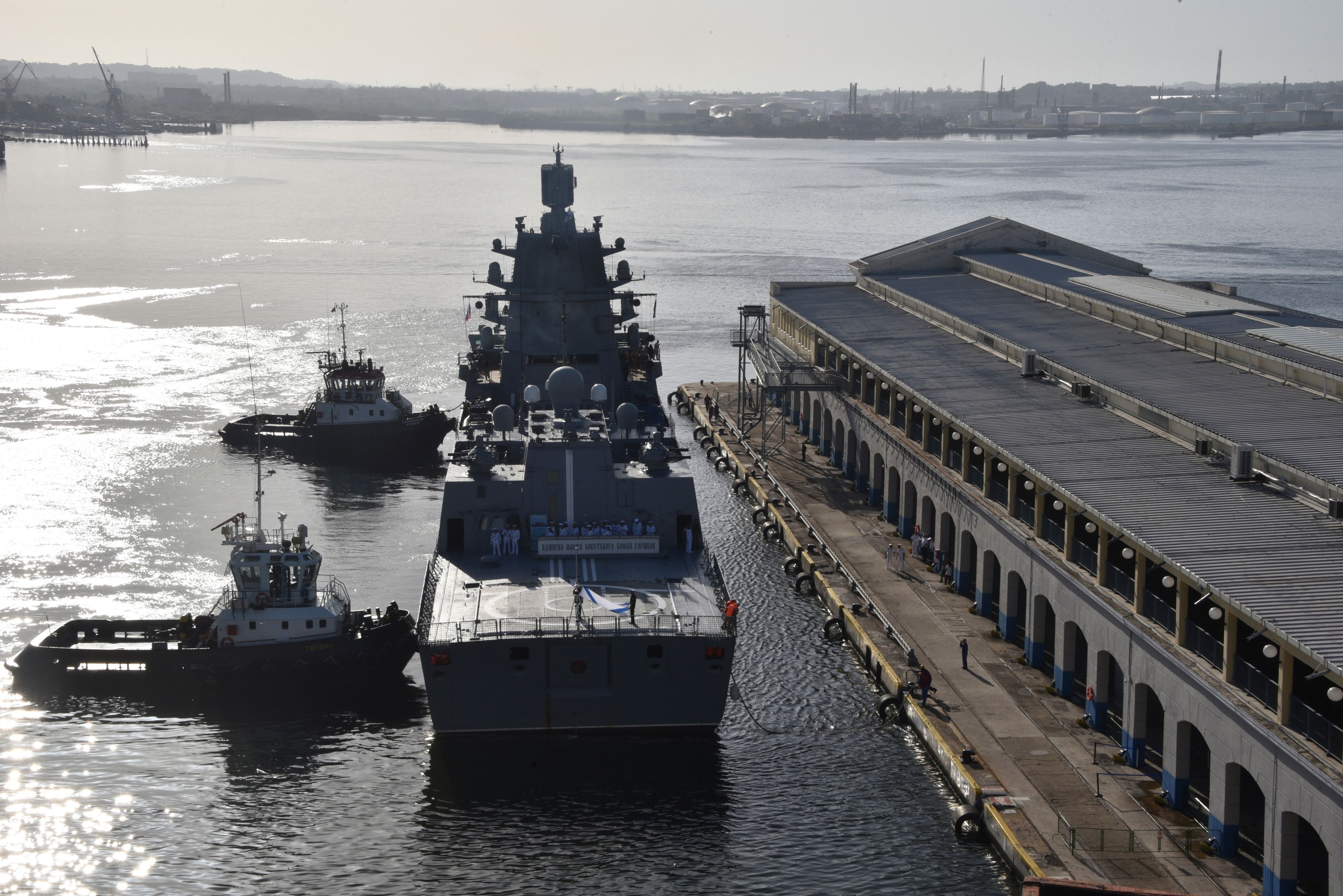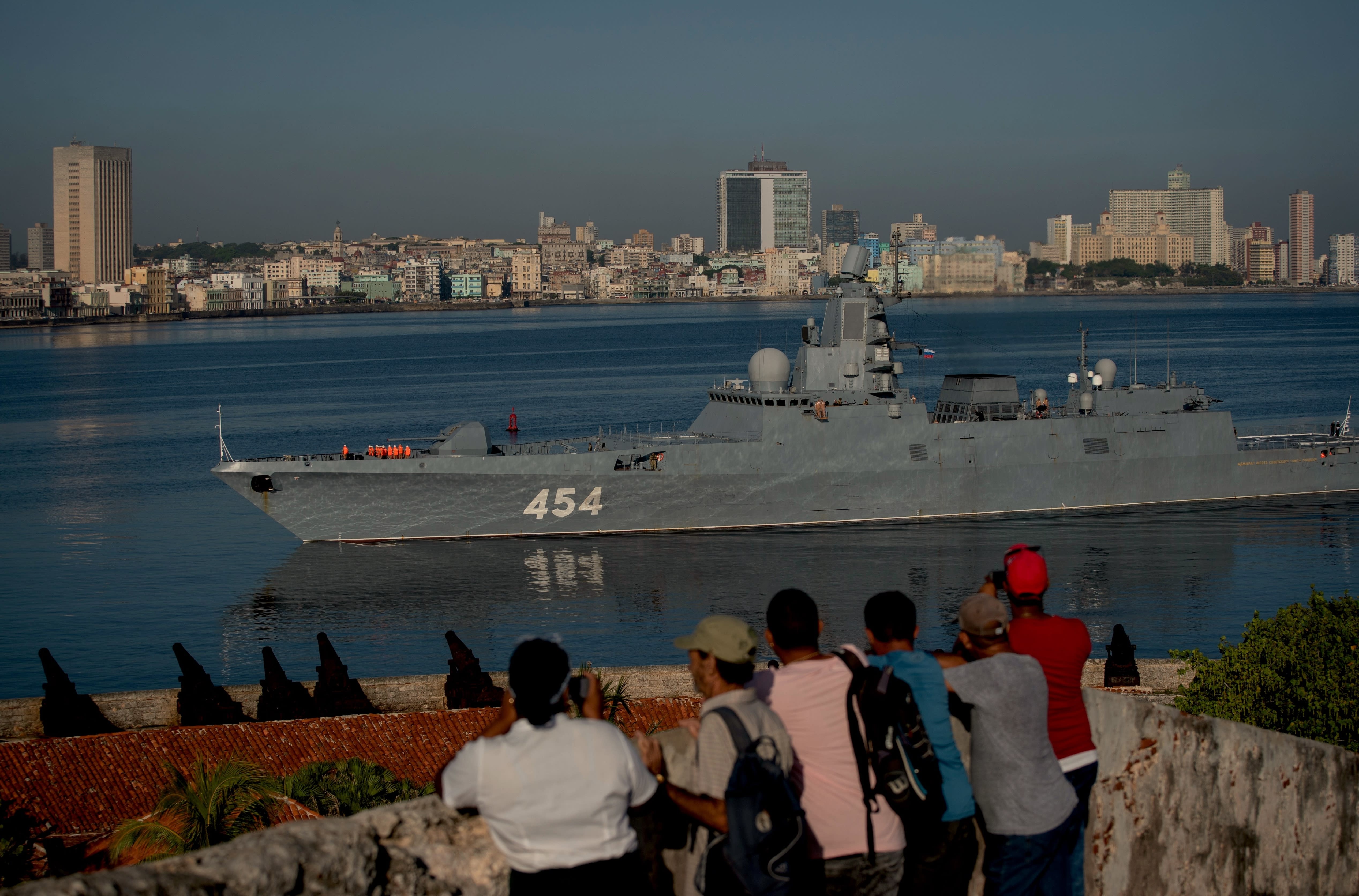Historical Presence and Influence

Russian navy cuba – The Russian Navy’s presence in Cuba dates back to the Cold War era, when the Soviet Union established a naval base at Cienfuegos in 1962. The base served as a strategic outpost for Soviet submarines and other warships, providing the Soviet Union with a foothold in the Western Hemisphere.
The Russian Navy’s presence in Cuba during the Cold War is a reminder of the tense geopolitical climate of the time. In contrast, the ongoing conflict between Colombia and the USA highlights the complexities of modern-day international relations. Colombia vs USA is a complex and multifaceted issue with historical roots and ongoing implications for the region.
Yet, despite these differences, both situations underscore the importance of diplomacy and peaceful resolution in addressing international disputes.
The Russian Navy’s involvement in Cuba was primarily driven by strategic and political considerations. The base at Cienfuegos allowed the Soviet Union to project power into the Caribbean and the Atlantic Ocean, and it also served as a staging ground for Soviet military operations in the region. Additionally, the Soviet Union’s presence in Cuba was seen as a way to counter the United States’ influence in the region and to support the Cuban government.
The Russian Navy’s presence in Cuba during the Cold War was a significant geopolitical event, raising tensions between the superpowers. Amidst the global rivalry, the world’s attention turned to a different kind of competition: the Copa America , the oldest international football tournament.
The tournament brought together teams from across South America, providing a spectacle that momentarily diverted focus from the Cold War’s naval maneuvers.
Impact on Cuba’s Military and Diplomatic Relations
The Russian Navy’s presence in Cuba had a significant impact on Cuba’s military and diplomatic relations. The base at Cienfuegos provided Cuba with a level of military protection and deterrence that it would not have otherwise had. Additionally, the Soviet Union’s support for Cuba helped to strengthen the Cuban government’s position in the region and internationally.
However, the Russian Navy’s presence in Cuba also strained Cuba’s relations with the United States. The United States viewed the Soviet base at Cienfuegos as a threat to its security, and it led to a number of diplomatic tensions between the two countries.
Current Operations and Capabilities

The Russian Navy currently maintains a limited presence in Cuba, consisting primarily of a signals intelligence (SIGINT) facility at Lourdes, located in the eastern part of the island.
The Lourdes facility is equipped with advanced surveillance systems capable of monitoring communications and radar signals across the Caribbean and the southeastern United States. It is also believed to be used for electronic warfare and cyber operations.
Russian Objectives in Cuba, Russian navy cuba
- Strategic intelligence gathering: The Lourdes facility provides the Russian Navy with valuable intelligence on U.S. military activities in the region.
- Electronic warfare and cyber operations: The facility can be used to disrupt or manipulate communications and computer systems, potentially interfering with U.S. military operations.
- Political and diplomatic leverage: Russia’s presence in Cuba gives it a symbolic foothold in the Western Hemisphere and can be used as a bargaining chip in negotiations with the United States.
Challenges for the Russian Navy
The Russian Navy faces several challenges in maintaining its presence in Cuba.
- U.S. surveillance and pressure: The United States closely monitors Russian activities in Cuba and has expressed concerns about the potential security risks posed by the Lourdes facility.
- Economic constraints: Russia’s limited financial resources may make it difficult to maintain the Lourdes facility and its operations.
- Changing geopolitical dynamics: The improving relations between Cuba and the United States could potentially lead to a reduction in Russia’s presence on the island.
Future Prospects and Implications: Russian Navy Cuba
The future of the Russian Navy’s presence in Cuba remains uncertain. Several factors could influence the situation, including the evolving geopolitical landscape, the state of relations between Russia and Cuba, and the development of new technologies.
Potential Scenarios
One potential scenario is that the Russian Navy will continue to maintain a presence in Cuba, albeit at a reduced level. This could occur if Russia and Cuba continue to enjoy close relations and if the geopolitical landscape remains relatively stable. Another scenario is that the Russian Navy will withdraw from Cuba entirely. This could happen if relations between Russia and Cuba deteriorate or if the geopolitical landscape changes significantly, making it no longer tenable for Russia to maintain a presence in Cuba.
Impact of Geopolitical Changes
The geopolitical landscape is constantly evolving, and it is difficult to predict how it will change in the future. However, some potential changes could have a significant impact on the Russian Navy’s presence in Cuba. For example, if the United States and Russia were to improve relations, it could lead to a reduction in the Russian Navy’s presence in Cuba. Conversely, if tensions between the United States and Russia were to increase, it could lead to an increase in the Russian Navy’s presence in Cuba.
Recommendations
There are several steps that could be taken to mitigate potential risks and maximize opportunities related to the Russian Navy’s presence in Cuba. These steps include:
- Maintaining open and transparent communication between Russia, Cuba, and the United States.
- Working to resolve any outstanding issues between Russia and Cuba.
- Encouraging the development of new technologies that could reduce the need for a Russian Navy presence in Cuba.
By taking these steps, it is possible to mitigate potential risks and maximize opportunities related to the Russian Navy’s presence in Cuba.
The Russian Navy’s presence in Cuba during the Cold War was a significant geopolitical event. The deployment of nuclear-armed submarines near the United States sparked international tensions. However, amidst the high stakes and diplomatic maneuvering, there was also a tale of human resilience.
Solomon Choi, a South Korean immigrant, rose from humble beginnings as a dishwasher to become a successful businessman known as “16 Handles.” His story, chronicled in the acclaimed article solomon choi 16 handles , serves as a reminder of the indomitable spirit that can emerge even in the most challenging of circumstances.
As the Russian Navy withdrew from Cuba, leaving behind a legacy of both tension and resilience, Choi’s journey stands as a testament to the power of perseverance and the enduring human spirit.
Amidst the ongoing tensions surrounding the Russian navy’s presence in Cuba, the international community is closely monitoring another geopolitical flashpoint: the upcoming match between Argentina and Ecuador. The clash of these two South American giants promises to ignite fierce competition, as both teams vie for victory in the Argentina vs Ecuador showdown.
Meanwhile, the Russian navy’s maneuvers in the Caribbean continue to draw scrutiny, raising concerns about potential implications for regional stability.
The Russian Navy’s presence in Cuba during the Cold War brought the world to the brink of nuclear war. While the tensions between the superpowers have since eased, other conflicts continue to simmer. The ongoing dispute between Colombia and the United States over drug trafficking and human rights abuses is a prime example.
Read more about Colombia vs USA. As the Russian Navy once again flexes its muscles in the Caribbean, it’s a reminder that the world is still a dangerous place, and that the threat of nuclear war is never far away.
